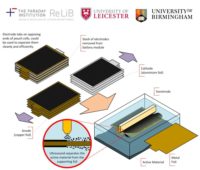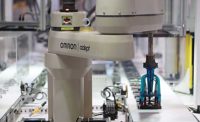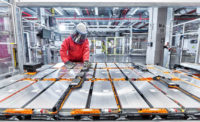A record 1.2 million U.S. vehicle buyers chose to go electric in 2023, the first time U.S. EV sales reached 1 million in a year. EVs accounted for 7.6 percent of the total U.S. vehicle market last year, up from 5.9 percent in 2022. And, although sales have leveled off a bit in recent months, EV sales are expected to grow 18 percent annually over the next five years, topping $161 billion in 2028.
An ample supply of batteries will be critical for meeting that demand, and not all of them will be made from virgin material. Indeed, recycling EV batteries is becoming big business. The EV battery recycling market was estimated at $2.3 billion in 2022. This sector is forecast to grow at a compound annual rate of 27 percent over the coming years, reaching $9.8 billion in 2028.
And why not? As more EVs enter the vehicle fleet—the Toyota Prius debuted in North America in 2000—massive amounts of retired EV batteries will be available for repurposing or as sources for the materials needed to make new batteries.
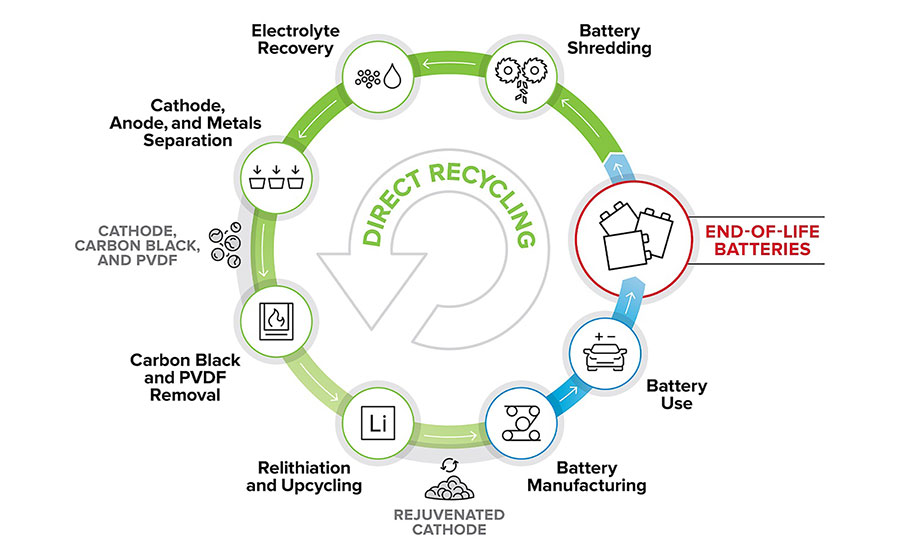
As more EVs enter the vehicle fleet, massive amounts of retired EV batteries will be available for repurposing or as sources for the materials needed to make new batteries. Illustration courtesy Argonne National Laboratory
The only hitch is to find a way to safely and cost-effectively disassemble EV battery packs. Today, the process is almost entirely manual. “Because it’s so labor-intensive, disassembly currently accounts for 33 percent of the cost of battery recycling,” says Young Soo Park, Ph.D., program lead for robotics and remote systems in the Applied Materials Division of Argonne National Laboratory in Lemont, IL, a Chicago suburb. “Future battery designs are becoming more integrated and more complicated, which will only make this process more difficult.”
The Problem
EV battery packs are surprisingly complex. Disassembling one is a multistep operation. Numerous components must be removed, including the cover; wiring harness; battery management system; cooling system; module tie downs; and the individual battery modules. Disassembling each battery module also requires multiple steps, including removing the module management system and harness connector; unscrewing the module bolts; removing the module cover; cutting the battery cell tabs; and removing the individual battery cells.
Manufacturers would love to automate disassembly of battery packs, but the process poses many challenges that are difficult to meet with conventional robotic systems. For one thing, packs come in myriad shapes and sizes, and a variety of techniques are used to assemble them. They have not been designed for disassembly.
The process is also potentially dangerous. A short circuit could result in a fire or even an explosion. Any automated disassembly system would therefore need to be highly precise and reliable. At the same time, the task requires complex manipulation, tactile feedback and spatial awareness.
“All of these processes are difficult for standard industrial robots,” says Park, who is also a senior fellow at the University of Chicago’s Computation Institute. “Disassembling a battery pack is not like a simple pick and place operation. Often, it requires combining motion and force feedback. You need a small robot with high power, and you need a robot capable of dynamic control.”
Automation to the Rescue
Fortunately, says Park, technology is available now that can help. “Many robots can be equipped with force control technology,” he points out. “New technologies, such as 3D sensing, augmented and virtual reality, machine learning, human-robot collaboration, and better robot control systems will enable us to create systems to solve this problem. Telerobotics technology will also help, because you don’t necessarily want a person in the room when the robot is doing its work.”
Park should know. He and his fellow researchers at Argonne have been working on ways to automate tasks in a similarly challenging application: handling radioactive materials in structured environments, such as laboratories, as well as unstructured environments, such as nuclear accident sites.
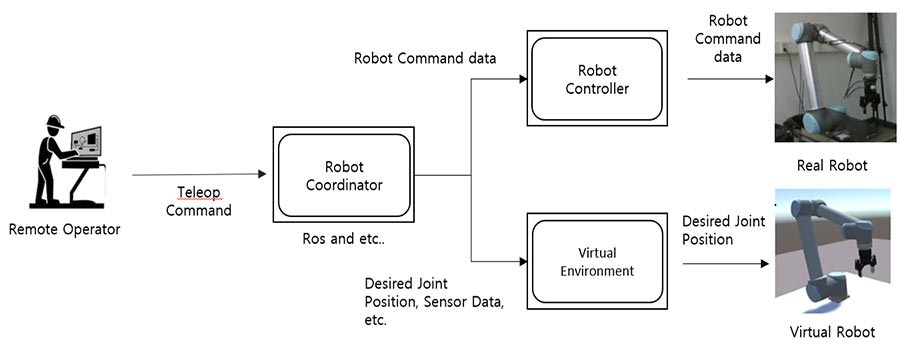
Argonne researchers are developing enhanced remote operation technology for battery disassembly applications by incorporating AR and robot autonomy. Illustration courtesy Argonne National Laboratory
Argonne researchers are developing enhanced remote operation technology for battery disassembly applications by incorporating AR and robot autonomy. In augmented teleoperation, artificial “virtual fixtures” are generated in an operator interface to simplify and enhance the precision of teleoperation. In teleautonomy, the robot’s autonomous behaviors are blended with manual commands to facilitate efficient remote operation. These technology innovations are already being applied for decontamination and decommissioning of nuclear facilities.
Development of robotic and remote systems for automated facilities is complex and expensive. To mitigate such concerns, recent advances in VR technology can be used to design iterate, optimize and validate the construction and operation digitally without building physical prototypes, says Park. Argonne has developed virtual modeling and simulation capabilities for various nuclear and manufacturing facilities, reducing the cost and time needed for physical prototypes.
The lab is developing intelligent methods to analyze and provide automation technology for difficult, complex and vague applications. For example, Argonne researchers have developed a new way of robot programming-by-demonstration based on machine learning. In this method, a manual skill is extracted by observing a human demonstration, and then adapted to the task environment observed from real-time sensing.
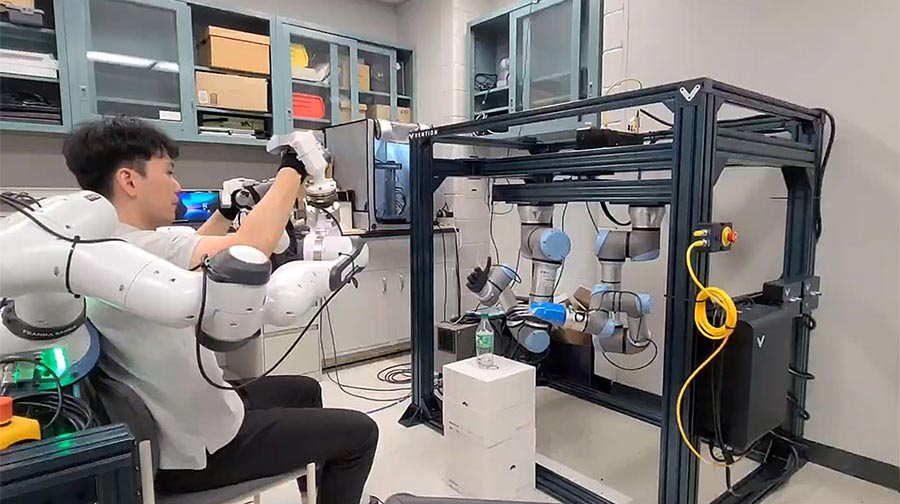
Argonne researchers have developed a new way of robot programming-by-demonstration based on machine learning. Photo courtesy Argonne National Laboratory
In other words, a skilled technician demonstrates a particular process. Sensors and feedback devices worn by the technician provide motion information to the robot controller. A vision system also provides data. The robot then attempts to emulate the skill demonstrated by the technician, correcting itself as it goes.
This technology is already being applied for autonomous materials synthesis and nuclear facility dismantling processes, but it could just as easily be applied to EV battery disassembly.
Extracting Minerals
Argonne is also at the forefront of developing ways to reclaim, refine and reuse the materials gathered from disassembled EV batteries.
EV batteries contain many valuable minerals and materials. The U.S currently does not produce enough of these minerals and materials to manufacture EV batteries without relying on imports. However, recycling could
Scientists at Argonne are pioneering new ways to extract materials from old batteries so they can be used again. They also have developed state of the art models to evaluate the economic and environmental impacts of each stage of a battery’s life, from mining of the raw materials through recycling.
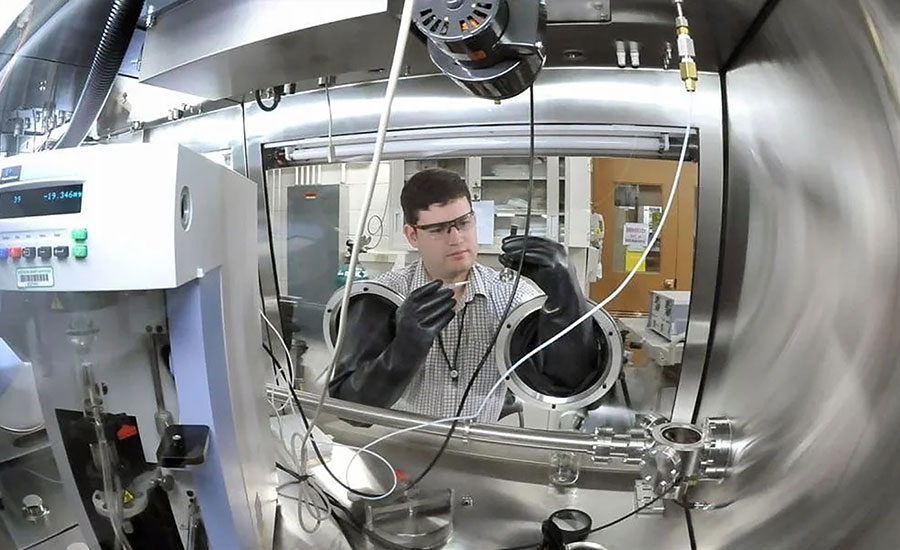
Argonne is also at the forefront of developing ways to reclaim, refine and reuse the materials gathered from disassembled EV batteries. Photo courtesy Argonne National Laboratory
The lab has also developed a number of partnerships with organizations in the materials production or recycling industries. These include:
Lilac Solutions has developed a new method to extract lithium from brines that can double the lithium recovery compared to conventional methods and dramatically reduce production time—all with a minimal impact on the environment. Argonne is helping Lilac better understand the potential of the new technology.
American Battery Technology Co. (ABTC) is building a field demonstration facility that produces lithium hydroxide from claystone deposits. The new technology can potentially reduce the costs and environmental impacts of lithium production. Argonne is helping ABTC analyze the technology, estimating production costs and environmental impacts and helping identify opportunities for improvement.
Michigan Technological University is working with Argonne on a project that aims to address issues of the cost and quality of material produced in battery recycling by coupling recycling with existing mine waste reclamation efforts. If successful, the project could reduce energy use by 25 percent. It could also help to establish a profitable U.S. battery recycling business and provide needed battery materials from unconventional sources.
Argonne scientists will also be working with Princeton NuEnergy Inc. to develop new direct recycling methods for end-of-life lithium-ion batteries. Today, most battery recycling involves breaking down existing batteries to extract the raw material needed for production. Direct recycling uses the battery components without breaking down the chemical structure. This approach significantly lowers costs and increases material performance. It also reduces chemical waste and limits the risk associated with the materials supply chain.
The University of California San Diego (UCSD) received funding to demonstrate a battery recycling technology that integrates a purification process into regeneration to improve the quality of cathode materials while reducing costs by up to 80 percent. Argonne scientists will help UCSD develop a working pilot, which could help solve the issue of limited domestic cathode supply.
ASSEMBLY ONLINE
For more information on robotics and battery manufacturing, read these articles:Flexible Automation Boosts Battery Production
VW Uses Robots to Assemble 300,000 Battery Packs Per Year
Comau Is Developing an Automated Battery Recycling System


